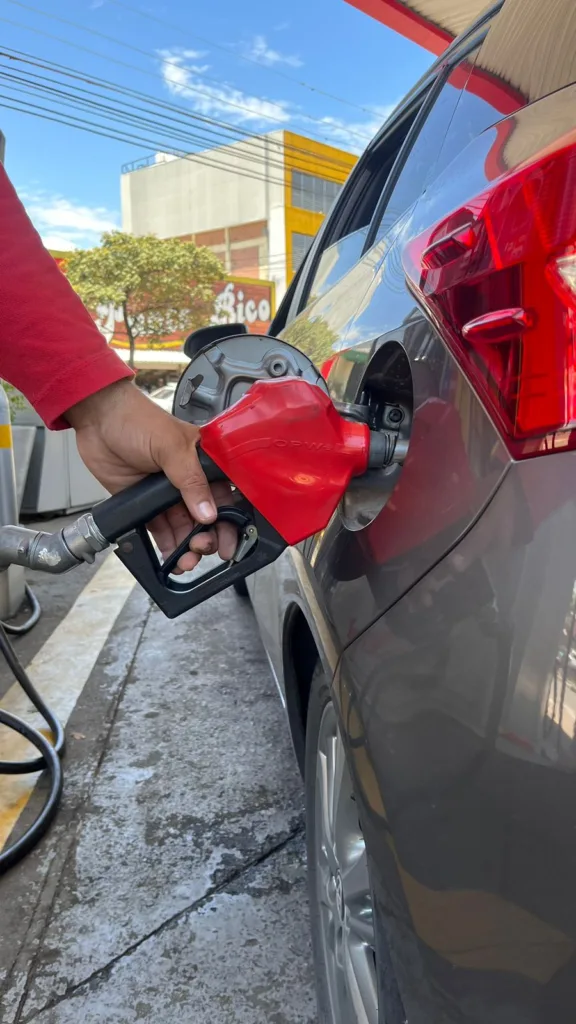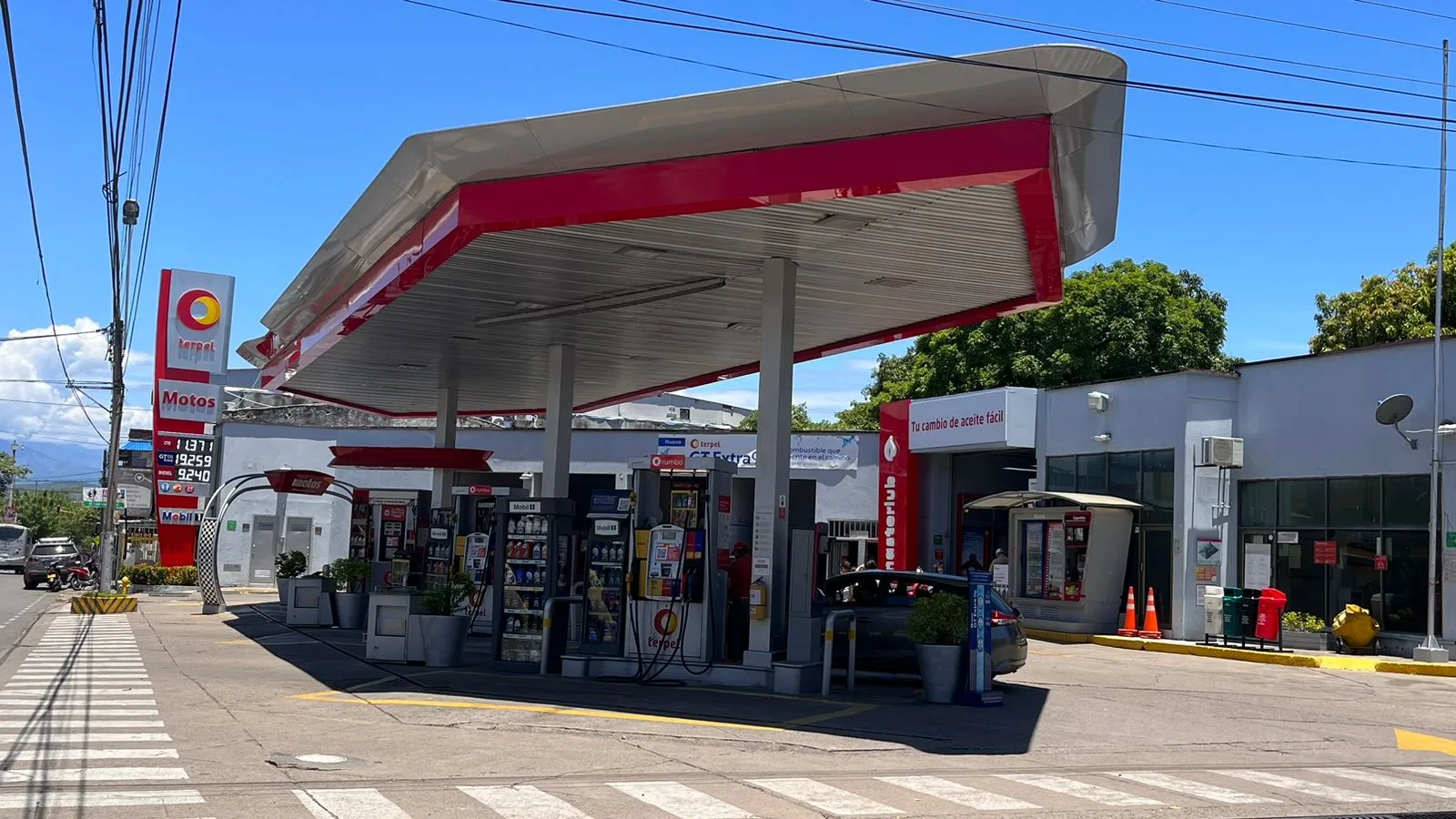So far this year alone, Huilenses have had to allocate more money for the purchase and tanking of their vehicles, given the rise in gasoline prices. Concerns about the ‘coletazo’ in transportation, food and cost of living.
Huíla Newspaper, foreground
By: Gloria Camargo
Bored and worried, that’s how many people from Huila were left after tanking gasoline this Monday, and having to get more out of their pocket to buy gasoline.
And it is that since October of last year, Colombians have seen how the price of gasoline has been increasing gradually, this after the decision of the National Government to take measures to avoid the deficit generated by the Fuel Price Stabilization Fund (FEPC), which allowed Colombians to access cheaper prices per gallon of gasoline than those found in the international market.
It should be remembered that the cost of producing gasoline arises from oil and its price is set through the international price, which exceeded all-time highs due to the covid-19 pandemic worldwide.
For this reason, the FEPC had been a key tool to mitigate the impact of these increases in fuel prices in Colombia, but its cost has represented a great expense for the national government, amounting to more than $17 billion between 2011 and 2019.
regional impact
Luz Mila Moyano Vargas, Executive Director of Combustibles del Sur, Combusur, indicated that “the increase in gasoline in the month of April was 400 pesos per gallon, this increase occurred because the Stabilization Fund since March of last year was in red .
What is being done is trying to compensate the subsidies that the government was giving for each gallon of gasoline to Colombians. We had the stabilization fund and we did not feel the increases strongly, but now that the Fund is over we have to adjust the price just as if it were happening in the United States, which is around 16,000 pesos, where a gallon of ordinary gasoline would be around four dollars, ”said the directive.
Moyano added that in Neiva, “we are already paying 11,110 pesos per gallon of gasoline. They are charging us the international price, and the price of fuel in Colombia is obviously going to impact our pockets, because if the price of gasoline increases, the price of cargo transportation, food, and passenger transportation increases.
It is going to affect our pocket, because it is going to reach the increase that was had in the minimum wage, which is not enough to compensate for the increases that we have had with respect to the increase in the price of fuel”, he pointed out.
Increases will be maintained
According to the National Government, although the increases have been significant, current prices are still far from leveling with the international average, which is the National Government’s plan to close the deficit of the Fuel Price Stabilization Fund (FEPC).
For this reason, although the average price of a gallon of gasoline in the 13 main cities of the country is 11,167 pesos, which still represents a surplus of 5,290 pesos to reach international costs, gasoline in Colombia would have to rise 400 pesos for 13 months. more to match the international price, which is around 16,500 pesos.
Therefore, the Ministry of Mines and Energy has explored renewable energy alternatives and energy efficiency policies have been promoted to reduce the consumption of fossil fuels.
national measures
The price of a gallon of gasoline has been increasing month by month since October of last year. In August 2022, when President Gustavo Petro took office, the price of gasoline was 9,264 pesos, however, in October of the same year, the decision was made to gradually increase the price of a gallon of gasoline until reaching the current price. of 11,167 pesos.

With these measures of gradual increases, the Petro Government has already exceeded the 1,000 pesos increase in fuels. October was the first of the three remaining months of the year in which a gallon of gasoline had an increase of 200 pesos, but in April of this year, the price of gasoline had an increase of 400 pesos per gallon, which represents a important economic burden for Colombians.
Given the impact of these increases in the price of fuels, it has been significant for Colombians, since it is increasingly difficult for citizens to maintain their budget in an uncertain and complex economic situation like the one the country is going through, added to the fact that the cost of life has risen exponentially and the financial burden has become heavier.
The impact of the increase in gasoline will also be felt in inflation, since the prices of many products and services will be affected by the increase in the cost of transportation. Inflation, therefore, could be affected in the coming months due to the increase in gasoline.
However, Colombia still has one of the cheapest gasoline and diesel prices in Latin America thanks to the FEPC, which has mitigated the inflationary pressure of the increases in the prices of oil and its derivatives in recent months.

By cities
Differences in the price of fuel continue to be a constant concern for drivers in Colombia. The Ministry of Mines and Energy has reported that in the 13 main cities of the country, the price of a gallon of ACPM or diesel is different, and although the national average is 9,065 pesos per gallon, in some cities this price can vary significantly.
The five cities where the ACPM value will be above the national average are Cali, Villavicencio, Pereira, Manizales and Bogotá, with prices ranging between 9,357 and 9,484 pesos per gallon. On the other hand, cities located in the border area such as Cúcuta and Pasto are the ones with the lowest prices, with a cost of 9,625 and 9,316 pesos per gallon, respectively.
As for regular gasoline, the price for sale to the public in the different cities of the country, except in Pasto and the rest of the department of Nariño, will be located at an average of 11,167 pesos per gallon.
Figures from the Ministry of Mines and Energy establish that the prices of a gallon of gasoline have been increasing since October last year to date. In October 2022, the price was 9,339 pesos, while in April 2023 the price is 11,167 pesos, which represents an increase of 19.6% in just six months.
The authorities have warned that if they had not had the operation of the Fuel Price Stabilization Fund (FEPC) so far in 2023, the price of current gasoline and ACPM would have been, on average, more than 4,500 and 8,700 pesos above the current average sale price per gallon, respectively.

